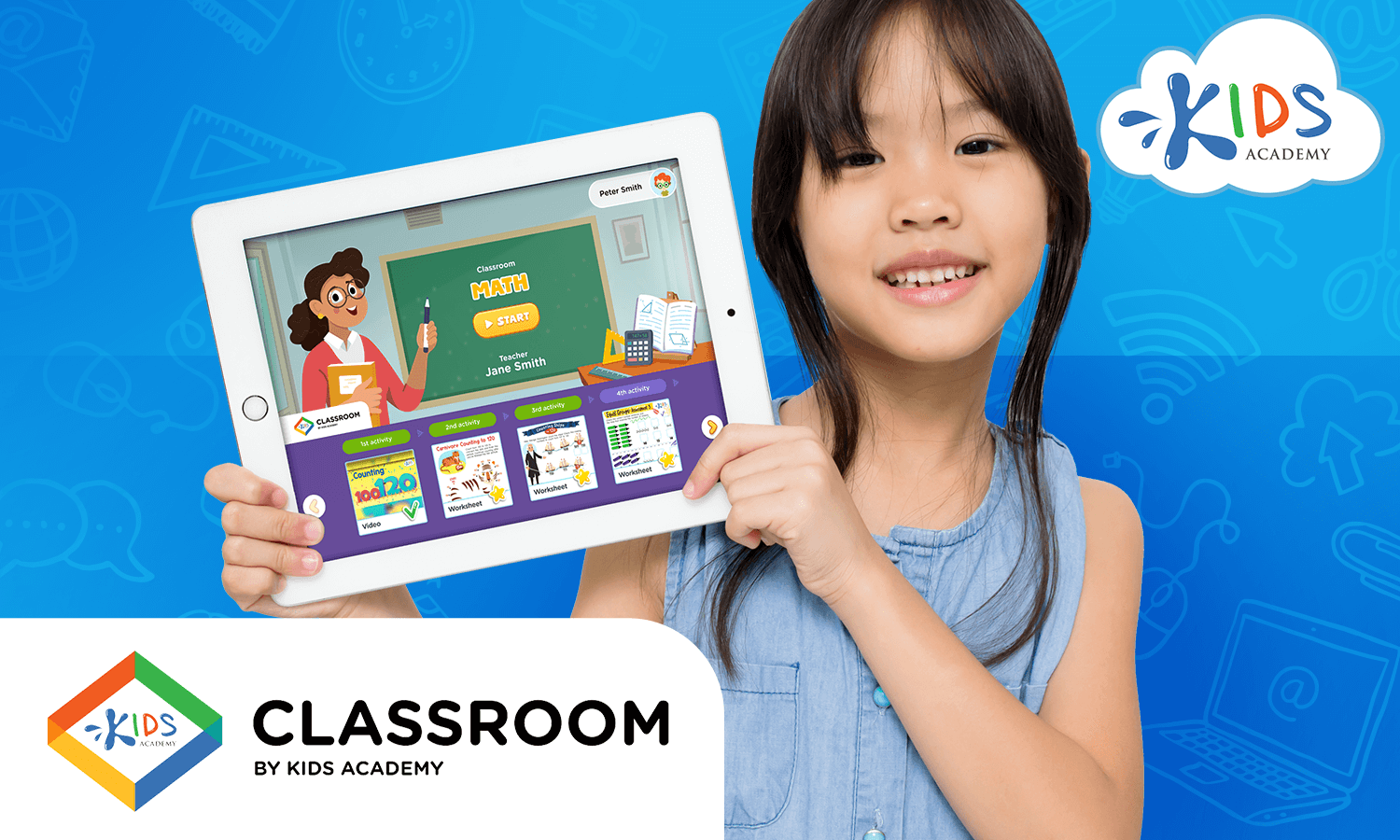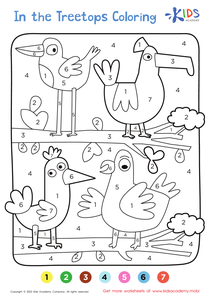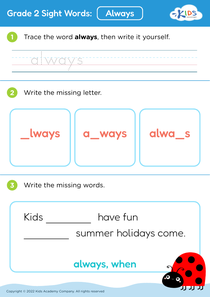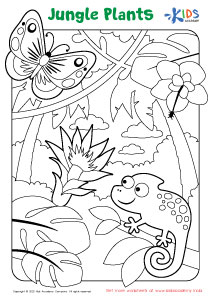Verb identification Grade 2 Worksheets
4 filtered results
-
From - To
Enhance your second grader's language arts skills with our engaging Verb Identification Worksheets. These printable worksheets are designed to help young learners easily recognize and use verbs in various sentences. With colorful illustrations and age-appropriate exercises, kids will practice identifying action words, understanding verb usage, and enriching their vocabulary. Our fun, interactive activities are aligned with Common Core standards to ensure comprehensive learning. Ideal for classroom use or home practice, these worksheets provide a solid foundation for essential grammar skills. Visit our Kids Academy page to download high-quality resources that make learning verbs fun and effective!


Verb or Roun Worksheet


Verbs in The Lion and the Mouse Worksheet


Verb Worksheet


Race Car Verbs Worksheet
Verb identification is an essential skill for second graders that significantly impacts their reading and writing abilities. At this foundational stage, students are beginning to construct more complex sentences and express themselves more clearly. Verbs serve as the action words in sentences, enabling children to convey what is happening. Understanding verbs thus enhances both comprehension and communication skills.
For parents and teachers, focusing on verb identification helps reinforce a child's grammatical framework. It’s not just about recognizing action words; it's about enabling children to understand sentence structure and the role different words play. When students grasp this concept early, it leads to more articulate, cohesive, and expressive writing and speaking.
Moreover, verb identification is closely tied to other critical literacy skills. For instance, it enhances students’ understanding of subject-verb agreement and tense, fostering better syntactic awareness. These skills are crucial for all future academic endeavors, as they directly affect reading comprehension and effective communication.
In summary, parents and teachers should emphasize verb identification in grade 2 because it forms the cornerstone of proficient language use. By mastering verbs, children gain tools that significantly contribute to their overall literacy development, setting them up for academic success both now and in the future.

 Assign to My Students
Assign to My Students




















